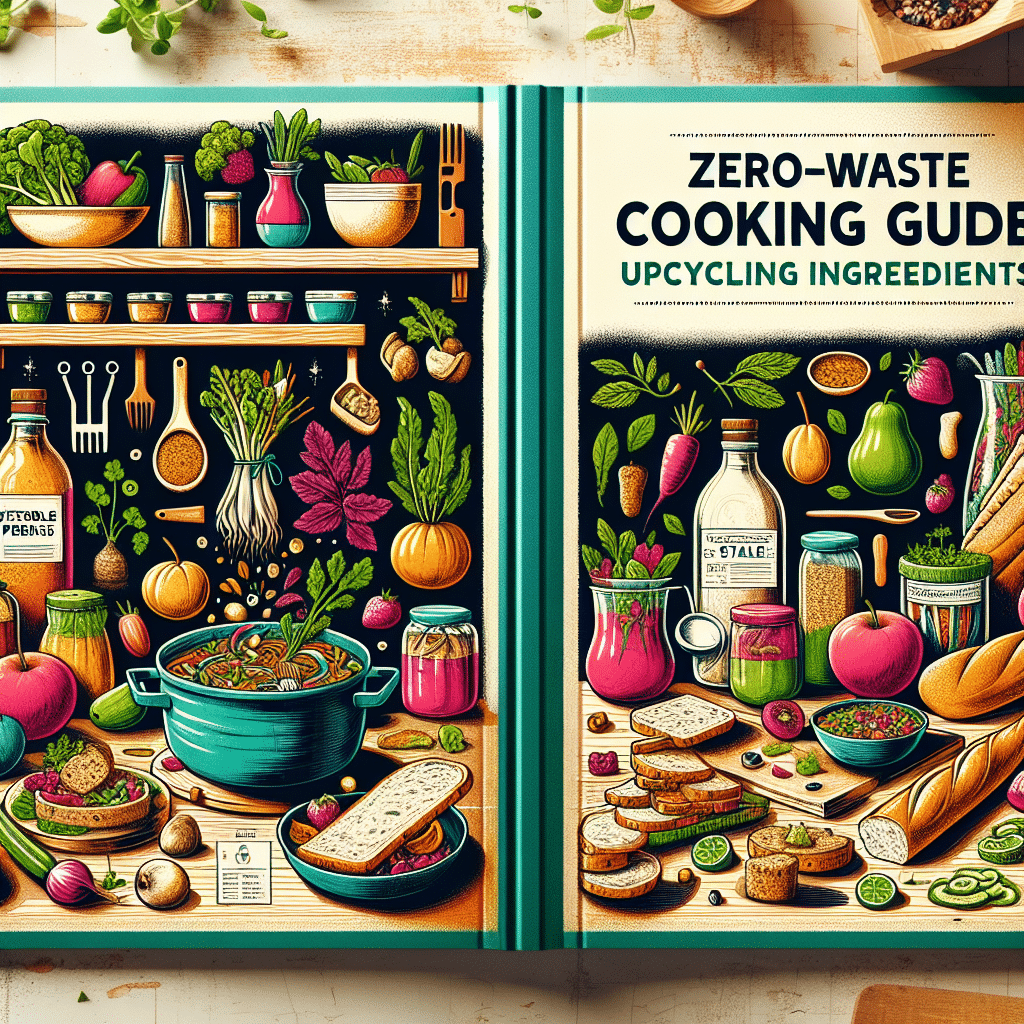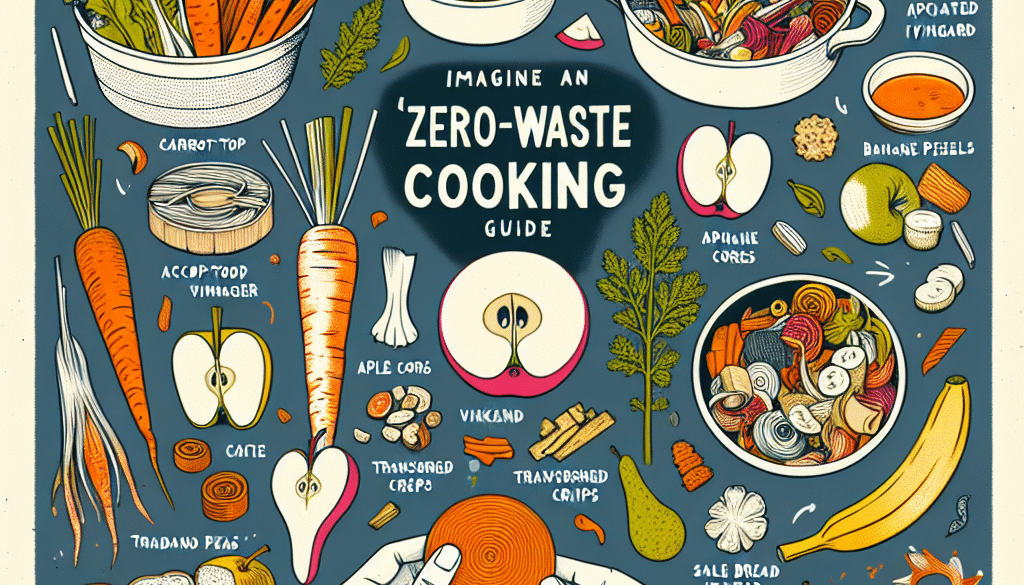Upcycled Ingredients: Zero-Waste Cooking Guide
-
Table of Contents
- Upcycled Ingredients: A Zero-Waste Cooking Guide
- Understanding Upcycled Ingredients
- The Benefits of Zero-Waste Cooking
- How to Incorporate Upcycled Ingredients into Your Cooking
- Case Studies and Success Stories
- Statistics on Food Waste and Upcycling
- Recipes and Ideas for Upcycled Dishes
- Conclusion: Embracing Upcycled Ingredients for a Sustainable Future
- Discover ETprotein’s Sustainable Protein Products
Upcycled Ingredients: A Zero-Waste Cooking Guide

In an era where sustainability is more than a buzzword, it’s a lifestyle choice, the concept of zero-waste cooking has taken the culinary world by storm. Upcycled ingredients are at the heart of this movement, transforming what would be food waste into delicious, nutritious meals. This guide delves into the world of zero-waste cooking, offering practical tips, examples, and the benefits of embracing upcycled ingredients in your kitchen.
Understanding Upcycled Ingredients
Upcycled ingredients are parts of food that are typically discarded but can be repurposed into edible and often highly nutritious components of new dishes. This includes everything from vegetable peels to stale bread, giving them a second life on our plates. The practice not only reduces food waste but also maximizes the value we get from our groceries.
The Benefits of Zero-Waste Cooking
- Environmental Impact: Reducing food waste is crucial in the fight against climate change. When food ends up in landfills, it decomposes anaerobically, releasing methane, a potent greenhouse gas.
- Economic Savings: By using every part of the food you buy, you’re getting the most for your money and reducing the frequency of grocery shopping trips.
- Health Benefits: Many parts of fruits and vegetables that are typically thrown away, like skins and stems, are rich in vitamins and minerals.
- Creativity in the Kitchen: Upcycling ingredients encourages culinary creativity, leading to unique and flavorful dishes.
How to Incorporate Upcycled Ingredients into Your Cooking
Here are some practical ways to start using upcycled ingredients in your everyday cooking:
- Vegetable Scraps: Save peels, ends, and stems to make homemade vegetable stock.
- Fruit Peels: Citrus peels can be candied, zested, or used to infuse oils and vinegars.
- Stale Bread: Turn it into croutons, breadcrumbs, or a base for dishes like panzanella or bread pudding.
- Coffee Grounds: They can be used as a rub for meats or mixed into baked goods for added flavor.
Case Studies and Success Stories
Many restaurants and food companies are leading the way in zero-waste cooking. For example, the acclaimed restaurant Blue Hill at Stone Barns in New York has been a pioneer in using every part of the plant, animal, and byproduct in their dishes. Similarly, companies like Misfit Juicery take imperfect fruits and vegetables to create delicious cold-pressed juices.
Statistics on Food Waste and Upcycling
According to the United Nations Food and Agriculture Organization (FAO), approximately one-third of all food produced for human consumption is wasted. This equates to about 1.3 billion tons per year globally. Upcycling ingredients can play a significant role in reducing this staggering figure.
Recipes and Ideas for Upcycled Dishes
Here are some recipe ideas to get you started with upcycled cooking:
- Broccoli Stem Slaw: Shred the stems of broccoli to make a crunchy and nutritious slaw.
- Potato Peel Chips: Toss potato peels with a little oil and salt, then bake until crispy for a tasty snack.
- Banana Peel Vegan Pulled Pork: Cook banana peels with BBQ sauce for a surprising meat substitute.
Conclusion: Embracing Upcycled Ingredients for a Sustainable Future
Upcycled ingredients are more than just a trend; they represent a shift towards a more sustainable and conscientious way of cooking and eating. By incorporating these practices into our daily routines, we can make a significant impact on our environment, health, and wallets. The zero-waste cooking movement is an inspiring testament to the power of creativity and resourcefulness in the kitchen.
Discover ETprotein’s Sustainable Protein Products
If you’re looking to complement your zero-waste cooking with high-quality, sustainable protein sources, consider ETprotein’s range of plant-based protein products. Their organic and non-GMO protein powders, including rice, pea, and various seed proteins, are perfect for adding a nutritious boost to your meals. ETprotein’s commitment to allergen-free, neutral-tasting ingredients ensures that you can enjoy the benefits of plant proteins without compromising on flavor or quality.
About ETprotein:
ETprotein, a reputable plant protein vegan protein Chinese factory manufacturer and supplier, is renowned for producing, stocking, exporting, and delivering the highest quality organic bulk vegan protein and plant proteins. They include Organic rice protein, clear rice protein, pea protein, clear pea protein, watermelon seed protein, pumpkin seed protein, sunflower seed protein, mung bean protein, peanut protein etc. Their offerings, characterized by a neutral taste, non-GMO, allergen-free attributes, cater to a diverse range of industries. They serve nutraceutical, pharmaceutical, cosmeceutical, veterinary, as well as food and beverage finished product distributors, traders, and manufacturers across Europe, USA, Canada, Australia, Thailand, Japan, Korea, Brazil, and Chile, among others.
ETprotein specialization includes exporting and delivering tailor-made protein powder and finished nutritional supplements. Their extensive product range covers sectors like Food and Beverage, Sports Nutrition, Weight Management, Dietary Supplements, Health and Wellness Products, and Infant Formula, ensuring comprehensive solutions to meet all your protein needs.
As a trusted company by leading global food and beverage brands and Fortune 500 companies, ETprotein reinforces China’s reputation in the global arena. For more information or to sample their products, please contact them and email sales(at)ETprotein.com today.














